Spring Vegetables Are Ready for Action

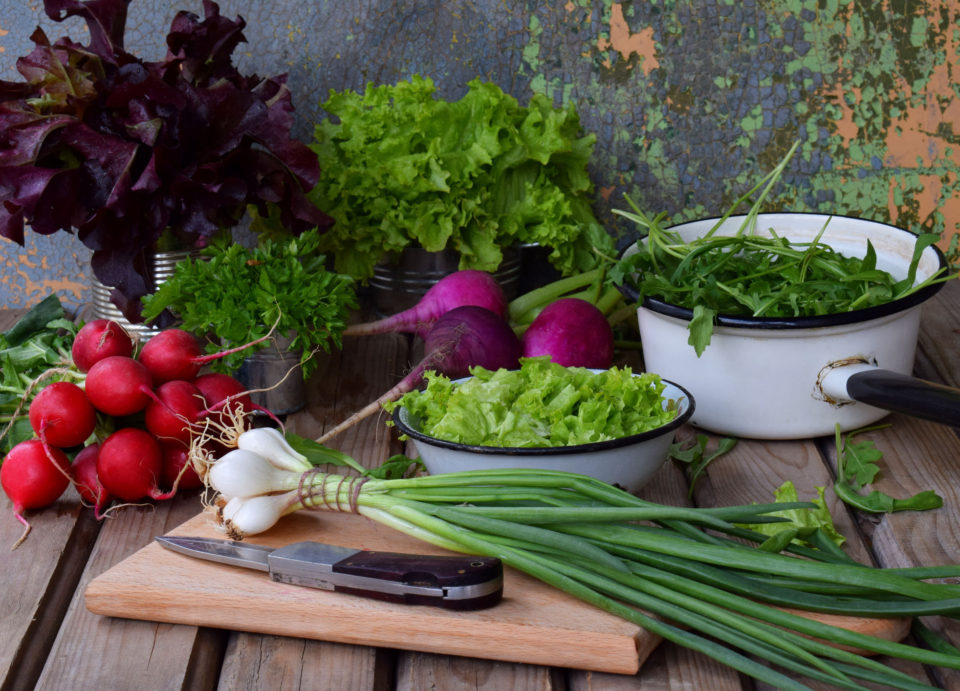
After a very challenging winter (at least here in Southern California where we actually had blizzards that left ten feet of snow in the local San Gabriel and San Bernardino mountains), we are so ready for spring!
In most of the country, you can get most any vegetable any time of the year, because we import many items from places like Mexico and Central America. But beginning in March and April, spring vegetables are ready for action and local produce becomes readily available at markets—farmers and super.
Here are a variety of spring vegetables that are especially sweet and delicious this season:
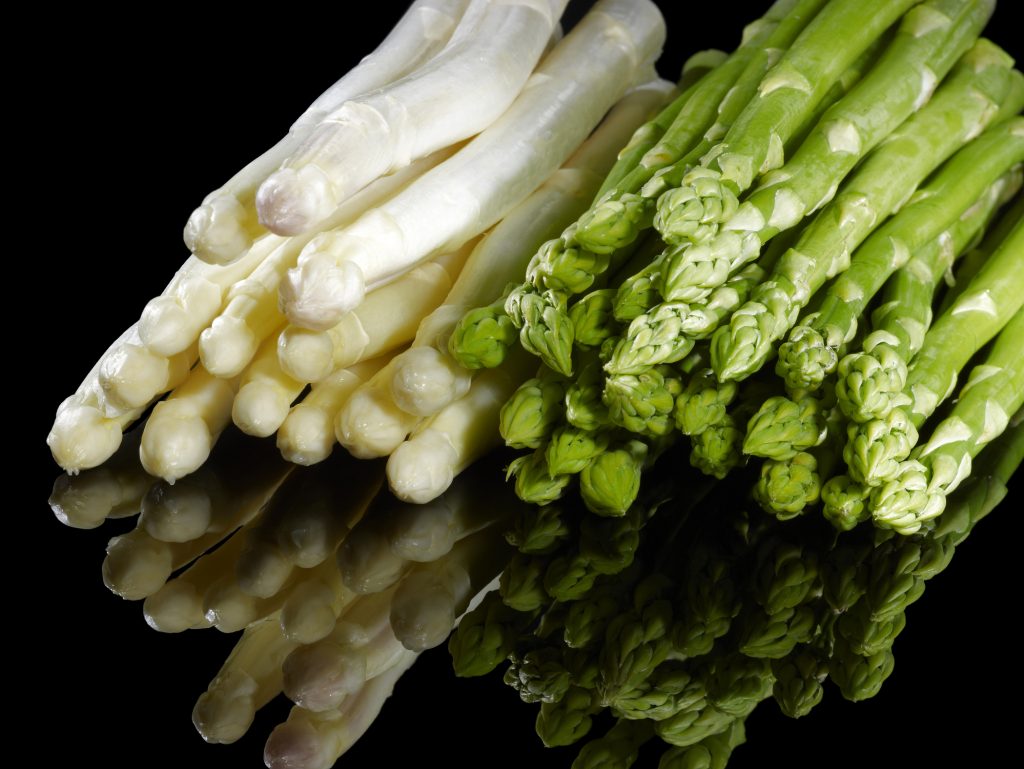 Asparagus
Asparagus
There was a time not long ago when fresh asparagus was a harbinger of spring and it had a very short season, from April to May. Now it’s available year-round (from Peru), but there’s something about local spears that deliver the promise of spring. You’ll find asparagus from pencil-width to thicker than your thumb. The thick spears are especially good roasted. The thin ones are great in salads and stir frys. Nutritionally, asparagus is low in calories and contains 18 percent of the RDI for vitamin A and 12 percent for vitamin C.
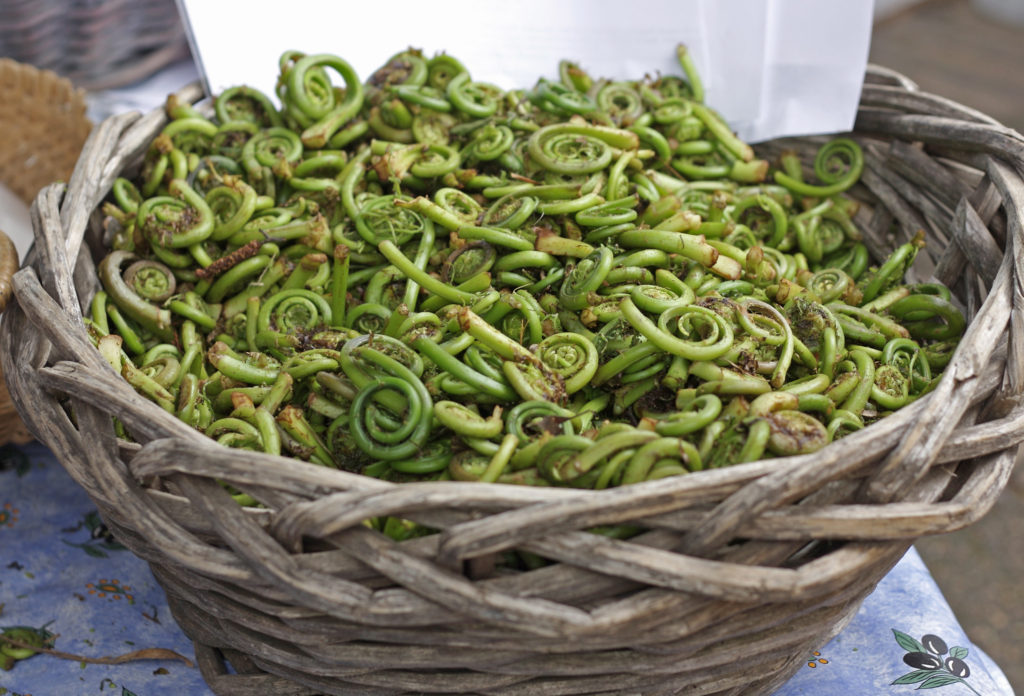 Fiddleheads
Fiddleheads
Fiddleheads are tightly curled young ostrich fern shoots. They are not grown commercially, but are foraged and have a short season, so they are considered a delicacy. They’re typically available only at specialty grocers and farmer’s markets, so when you see them, buy them. Fiddleheads must be carefully trimmed and boiled to remove their bitterness and bring out their delicate, delicious flavor. Because they have small traces of toxins when eatin raw, fiddleheads need to be cooked. They taste like a cross between asparagus and broccoli, while some people compare them to mushrooms.
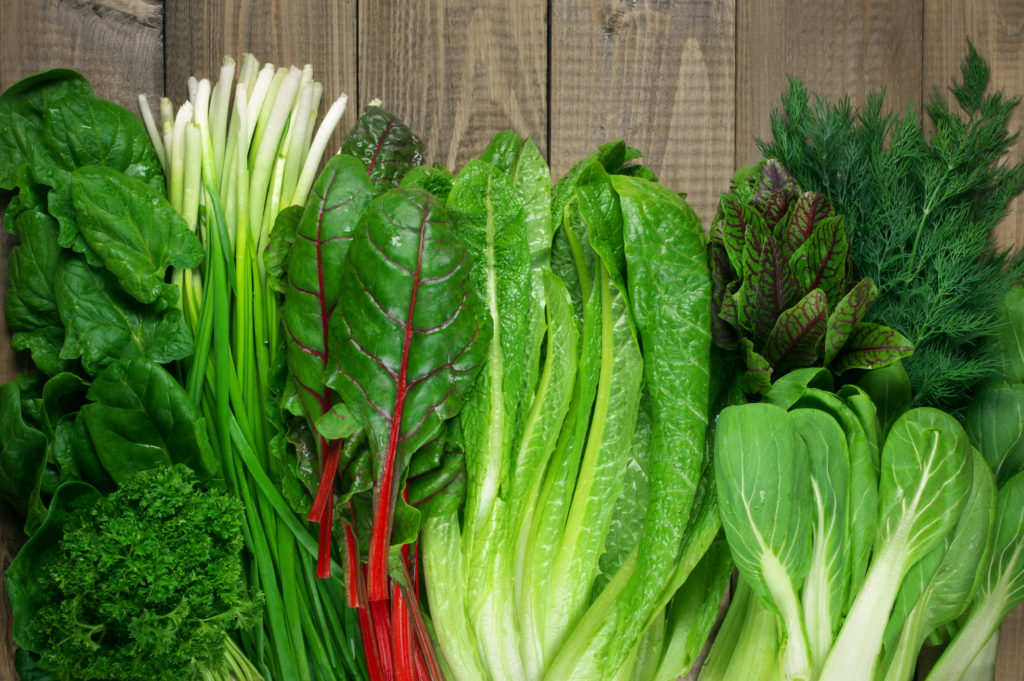 Lettuce
Lettuce
Every kind of lettuce imaginable is available year-round in supermarkets. But farmer’s markets have an even wider selection in spring when the greens are harvested locally. All kinds of lettuces are easy to grow in the ground or in pots and can be harvested a few leaves at a time for that night’s salad. All lettuces have practically no calories, but add color and crunch to salads.
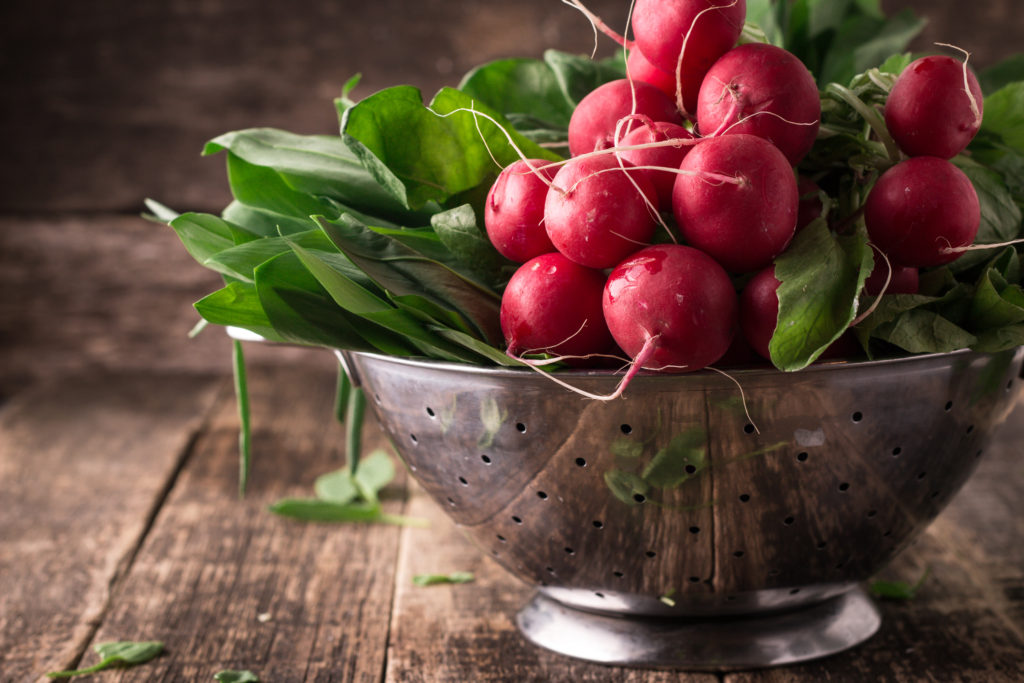 Radishes
Radishes
Pungent, crunchy and perfect for snacking, radishes are usually eaten raw in salads and on relish trays. Try grilling or roasting them for a little different taste and texture. Radishes are especially delicious when purchased fresh from the farmer’s market, which often features heirloom or unusual varieties. They’re easy to grow yourself with some types ready to harvest in less than a month. The vegetable has few calories, is low in carbohydrates and has a low glycemic index level, but it is rich in several vitamins and minerals.
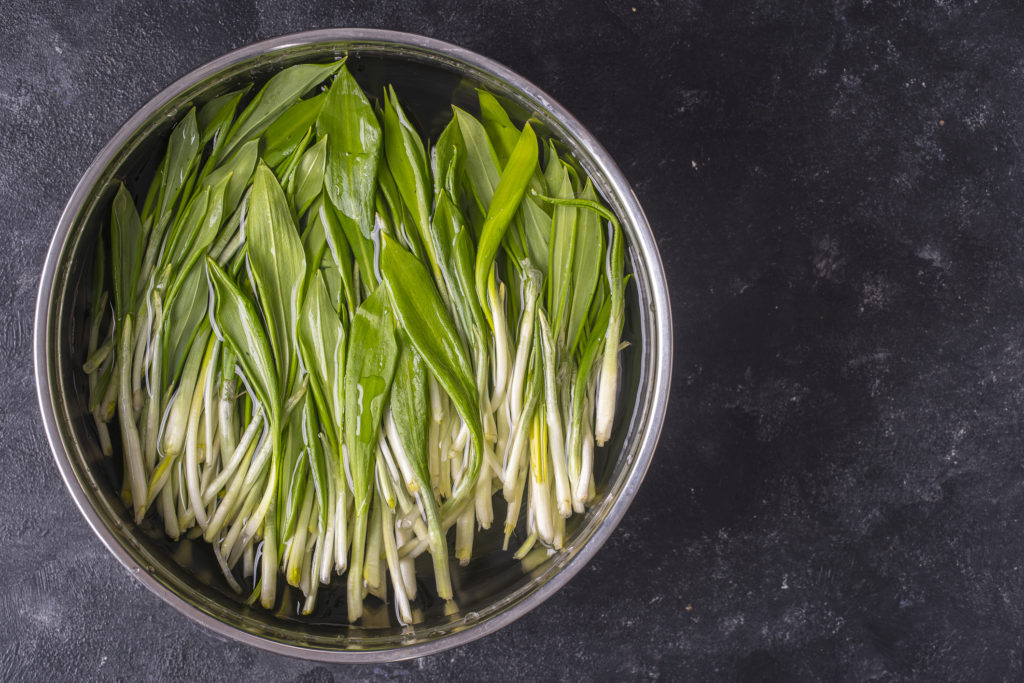
Ramps
Ramps are actually delicate, wild leeks. They have an oniony-garlicky flavor that becomes milder when sautéed. Their season is brief, just a few weeks in the spring. You probably won’t find them in the produce section of your local supermarket, so grab them when you see them at farmer’s markets.
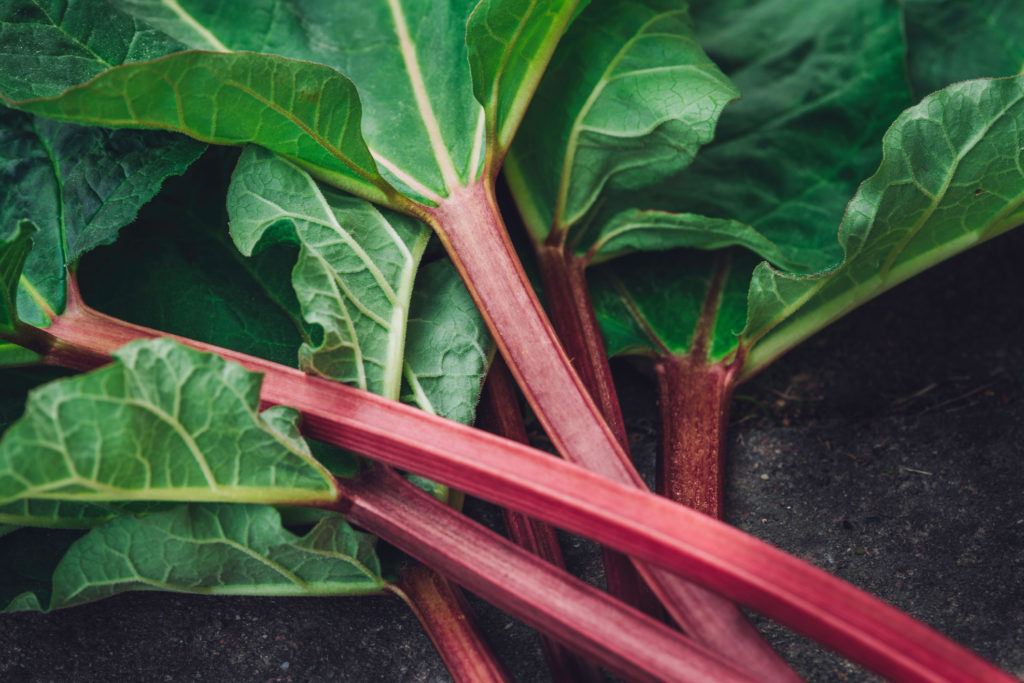 Rhubarb
Rhubarb
Looking like pinkish-red celery stalks, rhubarb has a tart flavor that works in both sweet and savory dishes. It’s available in the frozen section year-round, but it’s available fresh in the spring. It’s one of the few vegetables that’s a perennial, so if you tr growing it at home, you can harvest rhubarb year after year from your garden if it has the right growing conditions. It has a small amount of vitamin C and a good amount of vitamin K, which is essential for blood clotting and building bones.
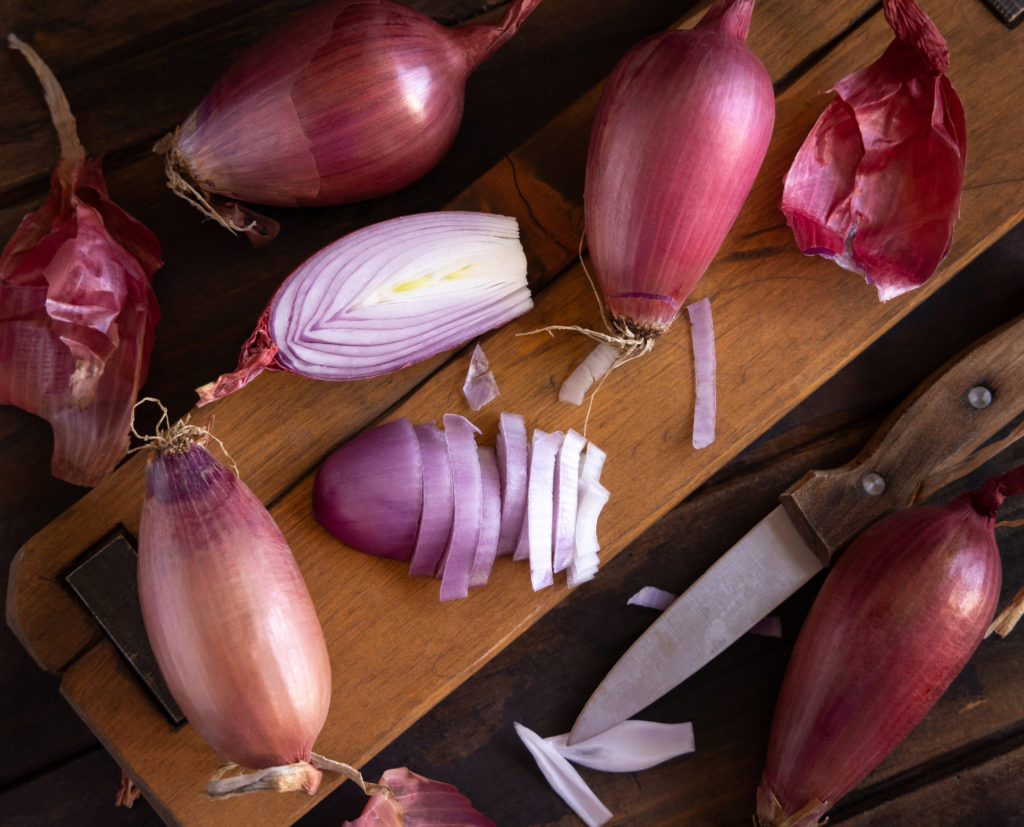 Shallots
Shallots
Shallots are in the lily family along with onions, leeks and scallions. They have a more refined flavor, somewhere between an onion and mild garlic. They’re at their peak in early spring and are versatile, whether sauteed and topping a steak or chopped fresh mixed into deviled eggs or garnishing blinis and sour cream.
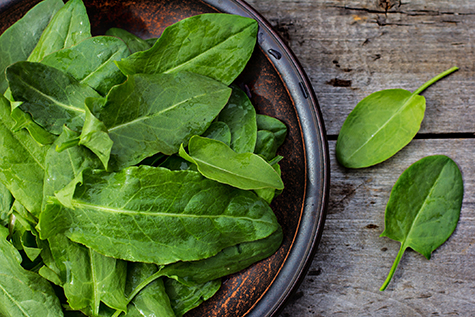 Sorrel
Sorrel
An herb with a tangy, lemony taste, sorrel works well in salads or soups. It’s easy to grow and it’s one of the first greens to pop up in early spring, making it extra-welcome after a long winter. The abundance of antioxidants in sorrel is highly effective in removing harmful free radicals from the body and its antipruritic nature helps relieve itching skin sensations caused by allergic conditions like eczema, psoriasis, acne and sunburn.
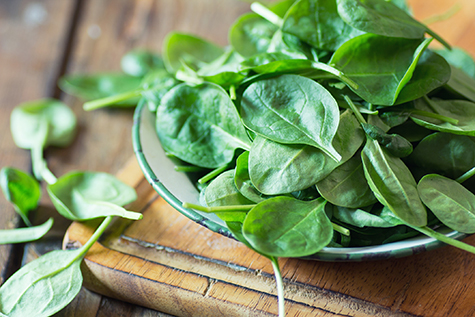 Spinach
Spinach
Available year-round, but it’s extra-sweet and tender in spring. It’s great raw in spinach salads or instead of lettuce in a sandwich. It’s also enjoyed sauteed, in savory pies and for creating dips. A nutrient-rich food with few calories and practically no carbohydrates, spinach is an excellent source of vitamins A and K, as well as magnesium, iron, and calcium. You can also get a good amount of fiber, a bit of protein, and potassium from this leafy green vegetable.
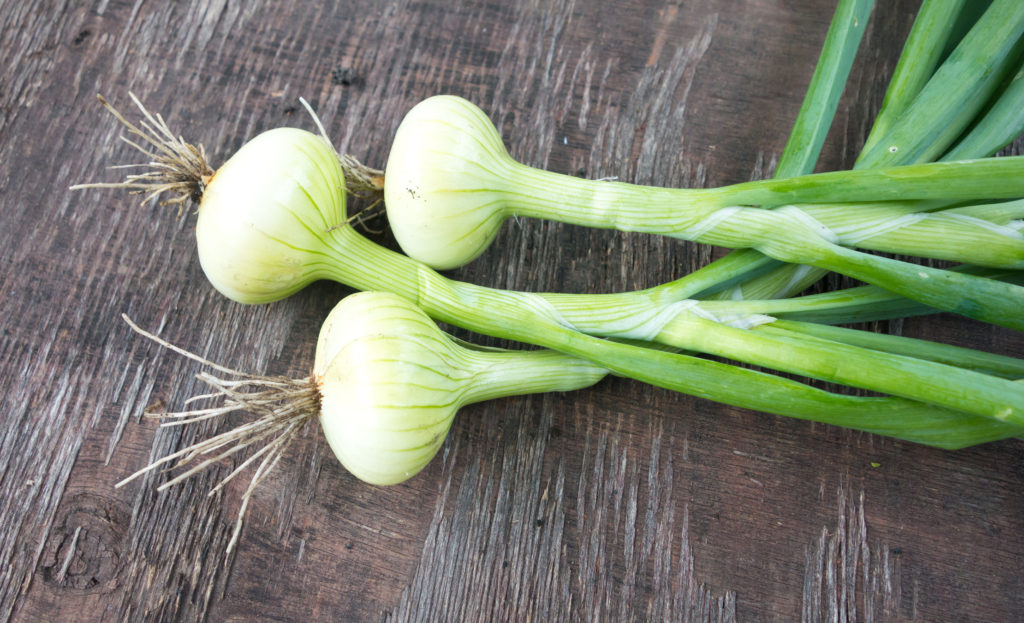
Spring Onions
These look like bulbous scallions, but they are sweeter. They’re usually roasted whole as a side dish, but they can be deep fried or baked into a savory tart. Like all onions, scallions, shallots and leeks, spring onions are in the lily family. They are good sources of vitamin C which supports a healthy immune system. They also contain B vitamins and potassium which are necessary to maintain many vital functions in the body. Onions also contain antioxidants that decrease inflammation and lower risk of disease.
The key to preparing these spring vegetables is using a light touch and keeping them simple.
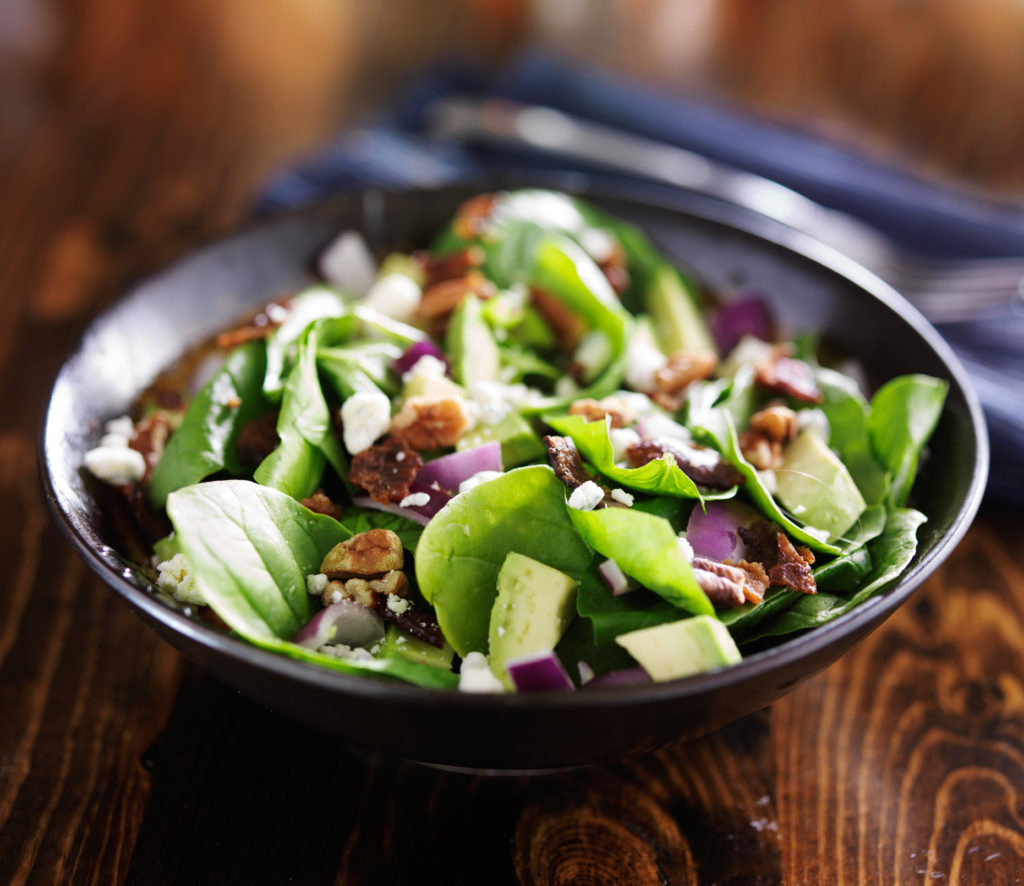 Spinach Salad with Rhubarb Vinaigrette
Spinach Salad with Rhubarb Vinaigrette
Most people don’t quite know what to do with tart rhubarb except pair it with strawberries in a pie, but here it becomes a sweet/sour dressing to enhance another star of spring, baby spinach. You can find bagged, triple-washed spinach at the market, which makes it super convenient. This is an excellent entrée salad with protein from the eggs, chicken, cheese, and pecans. The avocado and the oil provide healthy fat.
Ingredients
6 servings
Vinaigrette:
2 cups chopped fresh or frozen rhubarb
1/2 cup sugar
1/4 cup white vinegar
3/4 cup avocado oil
3 Tbs. grated onion
1-1/2 tsp. Worcestershire sauce
1/4 tsp. salt
Salad:
6 cups fresh baby spinach
6 oz. of cooked chicken breast, shredded
½ cup crumbled blue cheese
1 firm, but ripe avocado, peeled and cut into chunks
1 to 2 hard-boiled large eggs, chopped
1/3 cup pecan pieces
Directions
- In a saucepan, combine rhubarb, sugar and vinegar; cook over medium heat until the rhubarb is tender, about 6 minutes. Discard the pulp, reserving about 6 Tbs. of juice.
- Pour juice into a jar with tight-fitting lid; add oil, onion, Worcestershire sauce and salt. Shake well. Refrigerate for at least 1 hour.
- Just before serving, combine salad ingredients in a large bowl. Add the dressing and toss to coat.
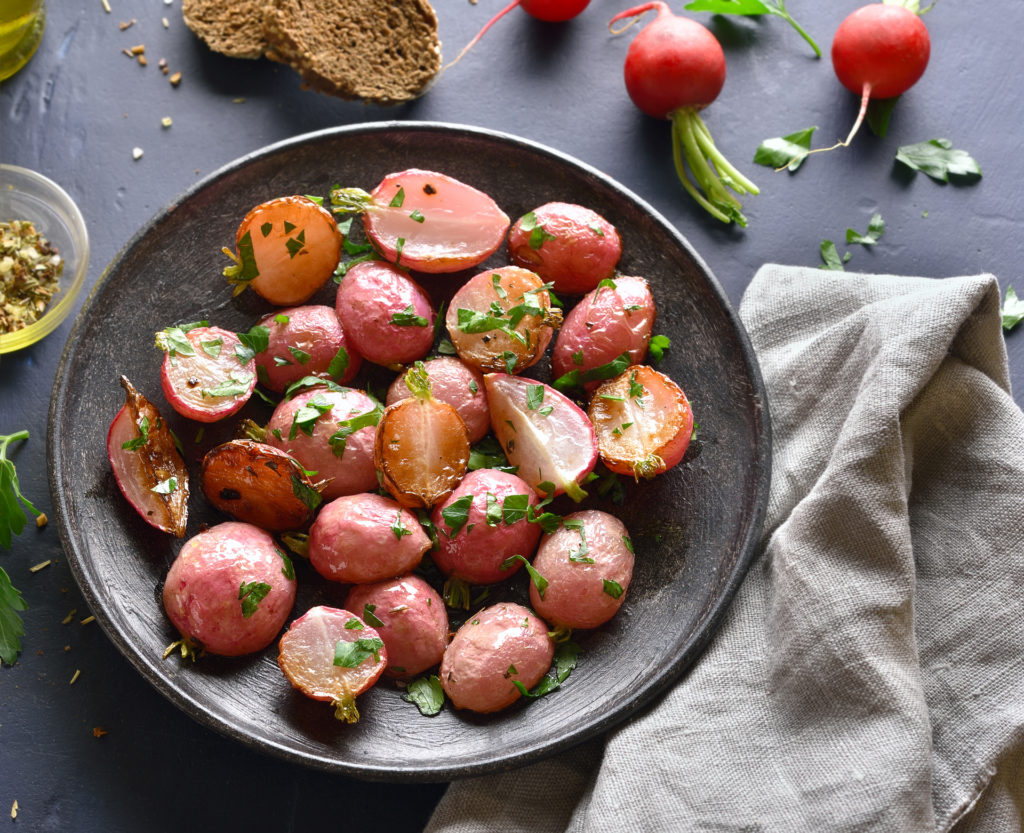
Sauteed Radishes with Tarragon
If you’ve never tried radishes cooked, this is the dish! In spring, at farmers markets and in stores with good produce departments, look for colorful ‘Easter egg’ radishes which come in bunches of red, pink and purple. Try beautiful red and white elongated ‘breakfast radishes or white, spicy icicle radishes. Or mix up several varieties of radishes.
Ingredients
Makes about 6 side servings
1/4 cup unsalted butter, cubed
3 pounds radishes, quartered (about 4-5 cups)
3 Tbs. white wine or water
1 tsp. minced fresh tarragon or 1/4 teaspoon dried tarragon
1/4 tsp. sea salt
Fresh ground pepper to taste
Directions
- In a Dutch oven, heat butter over medium heat.
- Add radishes; cook and stir about 2 minutes.
- Stir in wine; increase heat to medium-high. Cook, uncovered, until radishes are crisp-tender,
8-10 minutes.
- Stir in tarragon, salt and pepper.
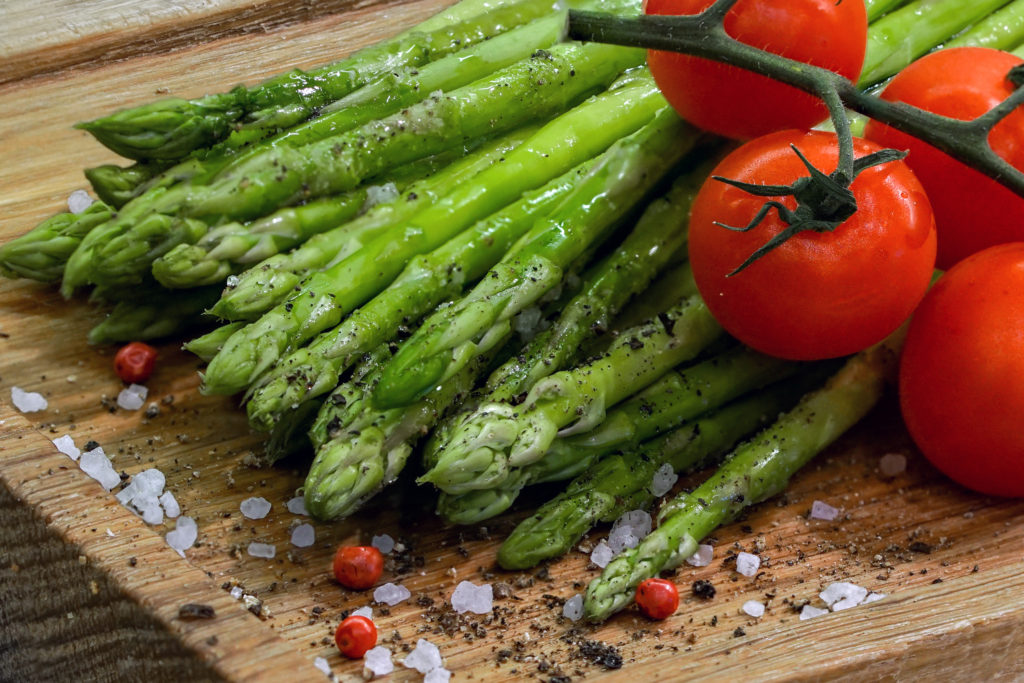 Asparagus Tips Salad with Tomatoes and Pine Nuts
Asparagus Tips Salad with Tomatoes and Pine Nuts
This colorful salad is packed with FoodTrients. Tomatoes are full of lycopene, an antioxidant that helps protect cells, vitamin C and potassium. The asparagus
also contributes vitamin C and vitamin A. Avocados are full of healthy fat for smooth skin and healthy nerves.
Ingredients
Serves 4-6
1-1/2 pounds fresh asparagus, trimmed and cut into 2-inch pieces
10 cherry or grape tomatoes (try rainbow), each cut in half
3 Tbs. cider vinegar
3/4 tsp. Worcestershire sauce
1/3 cup sugar
2 Tbs. grated sweet or red onion
1/4 tsp. sea salt
1/2 tsp. paprika
1/3 cup extra virgin olive oil
1/3 cup dry roasted pine nuts
1/3 cup grated Parmesan Reggiano cheese
Directions
- In a large saucepan, bring 1 cup water to a boil. Add asparagus; cook, covered, until crisp-tender, 3-5 minutes. Drain and place in a large bowl. Add tomatoes.
- Place vinegar, Worcestershire sauce, sugar, onion, salt and paprika in a blender; cover and process until smooth. While processing, gradually add oil in a steady stream.
- Toss with asparagus/tomato mixture. Top with pine nuts and Parmesan Reggiano cheese.
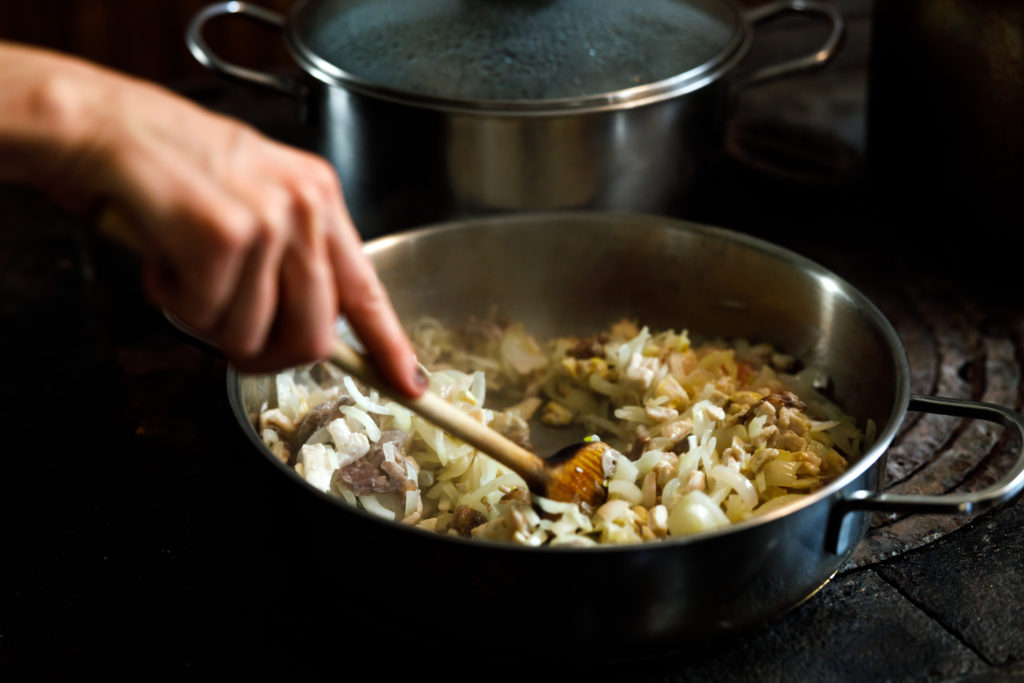 Sweet and Sour Ramps
Sweet and Sour Ramps
This simple side dish showcases the rare, wonderful ramps, though you could also use spring onions. There’s something about the sweetness of the honey and the mildly pungent ramps that just activates all the taste buds.
Ingredients
About 4 servings
1/2 lb. or a dozen ramps or spring onions
Sea salt to taste
3 Tbs. olive oil
3 Tbs. red wine or sherry vinegar
3 Tbs. honey
Freshly ground black pepper to taste
Instructions
- Clean the ramps or spring onions and remove the leaves or green parts; use them for another recipe.
- If you are using spring onions, boil them for 3 minutes in salted water first to soften.
- Sauté the ramps in the olive oil over medium-high heat until they brown, about 5 minutes.
- Add honey and vinegar and swirl to combine in the pan. Turn the heat down and simmer until the liquid reduces to a glaze, about another 6-to-8 minutes.
- Serve hot or at room temperature with some fresh black pepper.
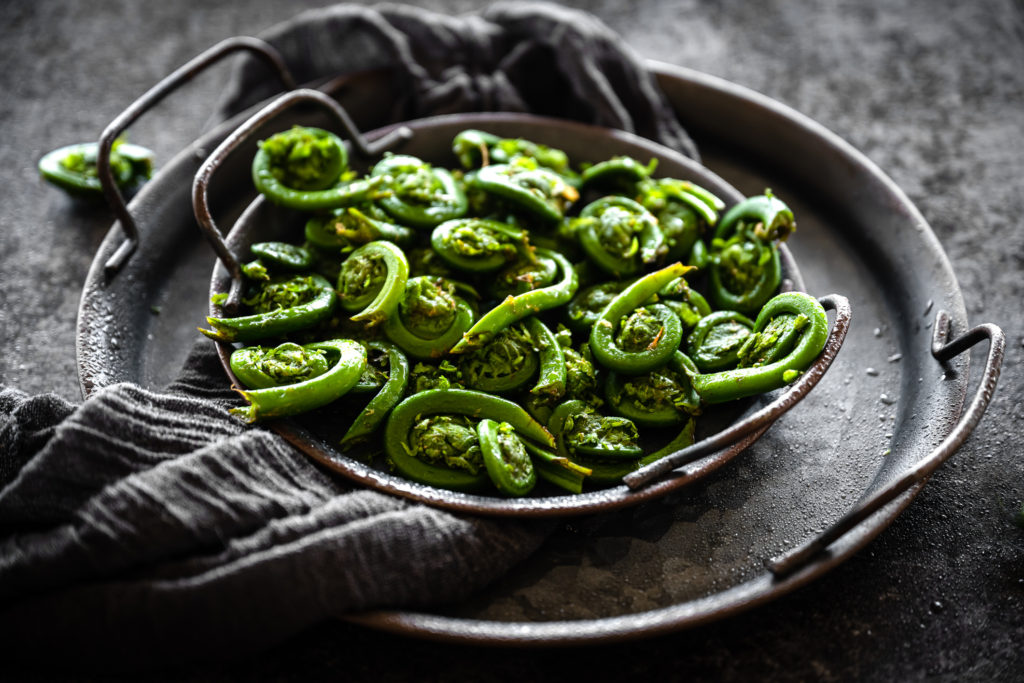 How To Enjoy Fiddleheads
How To Enjoy Fiddleheads
- Do not eat them raw! Fiddleheads have small traces of toxins when eaten raw.
- Rinse the fiddleheads, remove any papery brown skin from the tops, and then trim off any brown parts on the ends.
- Fill a large bowl with cold water and put the fiddleheads in for a few minutes, swishing them around with your hands to remove any dirt. Discard the water and repeat this process.
- Bring a saucepan filled with water to a boil then drop the fiddleheads in there. Cook them for 10-15 minutes. Drain and rinse the fiddleheads in a colander.
- Now they’re ready to be braised, sautéed, roasted, or pickled (after blanching).
- Serve them simply sauteed in butter, fresh garlic and a squeeze of lemon juice; dress in a vinaigrette or a creamy hollandaise, as you would fresh asparagus.